To make braids last longer, use a gentle shampoo and conditioner, avoid over-styling or excessive manipulation, and protect the braids while sleeping with a satin bonnet or scarf. Braids are a popular hairstyle choice for their versatility, convenience, and long-lasting effects.
However, ensuring that your braids stay intact for a longer duration requires proper care and maintenance.
One essential step is to use a gentle shampoo and conditioner when washing your hair with braids.
Over-styling or excessive manipulation can put stress on the braids, so it’s important to avoid too much tugging or pulling.
Sleep with a satin bonnet or scarf to protect the braids from friction and preserve their shape. By following these simple tips, you can keep your braids looking fresh and beautiful for an extended period.
Can You Keep Braids Permanently

Braids, like most hairstyles, are not meant to be kept permanently. They are considered a temporary protective style.
The duration you can keep braids in your hair depends on various factors, including the type of braids, your hair type, and how well you maintain them.
On average, braids can last from a few weeks to a couple of months.
Here are some key reasons why braids are not meant to be permanent:
- Hair Growth: Your hair naturally grows over time. As your hair grows, the roots of your braids start to show, and the style can lose its neat appearance. To maintain a well-kept look, you’ll need to redo or touch up your braids periodically.
- Maintenance: Braids require proper care and maintenance to keep them looking fresh and to prevent issues like frizz, tangling, and breakage. Neglecting maintenance can lead to hair damage.
- Hygiene: Over time, dirt, sweat, and product buildup can accumulate in your braids and on your scalp. Regular cleansing is essential for hair and scalp health.
- Tension: Leaving braids in for an extended period can put excessive tension on your hair and scalp, which may lead to breakage or damage.
- Style Changes: You may want to change your hairstyle or try different looks, which is not possible if you keep the same braids permanently.
How Long Do Braids Usually Last
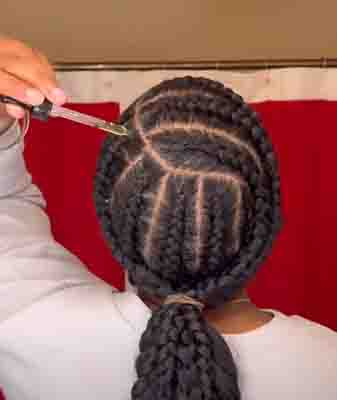
Here’s a breakdown of the typical duration of different types of braids:
- Box Braids: These versatile braids typically last 4 to 8 weeks. They work well for various hair types and lengths and provide a protective style that reduces daily manipulation.
- Cornrows: Cornrows usually hold for 2 to 4 weeks. They are a classic protective style suitable for various hair types, especially when done with extensions.
- Senegalese Twists: Senegalese twists can stay intact for 6 to 8 weeks. They are a popular choice for a protective and stylish look.
- Ghana Braids (Cornrows with extensions): Ghana braids often last 4 to 6 weeks. They offer a stylish and protective option, especially when extended with braiding hair.
- Faux Locs: Faux locs typically hold for 6 to 8 weeks. They mimic the look of traditional locs without the long-term commitment.
- Havana Twists: Havana twists can stay in place for 6 to 8 weeks. They provide a bold and trendy protective style.
- Micro Braids: Micro braids often last 6 to 8 weeks. These tiny braids require meticulous attention but offer a unique look.
- Marley Twists: Marley twists typically hold for 4 to 6 weeks. They are named after Marley braid hair used to create a natural look.
- Crochet Braids: Crochet braids usually last 4 to 6 weeks. They are a quick and versatile protective style.
- Knotless Braids: Knotless braids can stay intact for 6 to 8 weeks. They provide a more comfortable and less tension-prone alternative to traditional box braids.
- Tree Braids: Tree braids often last 6 to 8 weeks. They combine cornrows with loose braiding hair for a natural look.
- Bantu Knots: Bantu knots hold for 1 to 2 weeks. While they have a shorter lifespan, they create beautiful curls when unraveled.
- Flat Twists: Flat twists usually last 2 to 4 weeks. They offer a neat and stylish option for medium-length to long hair.
- Two-Strand Twists: Two-strand twists can stay intact for 2 to 4 weeks. They are a classic protective style that promotes curl definition.
- Braided Updos: Braided updos often last 4 to 6 weeks. They are a versatile option for special occasions and everyday wear.
- Braided Ponytails: Braided ponytails usually hold for 2 to 4 weeks. They provide a chic and practical style.
- Braided Bob: Braided bobs typically last 2 to 4 weeks. They offer a trendy and manageable option for shorter hair.
- French Braids: French braids often hold for 2 to 4 weeks. They are a classic and elegant choice.
- Dutch Braids: Dutch braids typically last 2 to 4 weeks. They create an eye-catching look with the braid sitting on top of the hair.
- Crochet Locs: Crochet locs can stay intact for 4 to 6 weeks. They are a low-maintenance option for achieving the locs look without commitment.
Are Braids Hard to Maintain
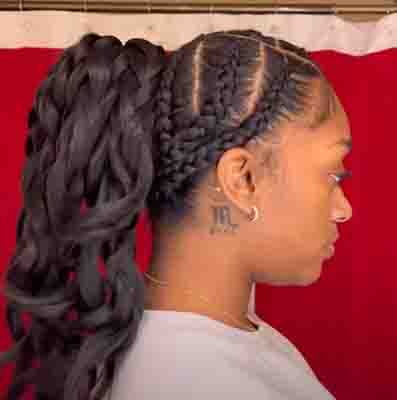
Braids require regular maintenance, but they are not overly difficult to maintain. Braids are a popular and versatile hairstyle choice, known for their durability and protective qualities.
Maintenance for braids usually includes:
- Scalp Care: Keeping your scalp clean and moisturized is essential. You can use a lightweight oil or braid spray to prevent dryness and itchiness. Regular scalp massages can also help promote healthy hair growth.
- Tightening Loose Sections: Over time, braids can become loose. It’s important to regularly check and tighten any loose sections to maintain the neatness of your hairstyle.
- Avoiding Excessive Tension: Be gentle with your braids and avoid excessive pulling or tugging, as this can lead to breakage and discomfort.
- Protecting While Sleeping: Use a satin or silk scarf or pillowcase to protect your braids while sleeping. This helps reduce friction and frizz.
- Avoiding Heavy Products: Don’t use heavy or greasy hair products that can weigh down your braids and make them look dull.
- Washing and Conditioning: You can wash your braids, but it’s essential to be gentle and focus on the scalp rather than scrubbing the braids themselves. Use a lightweight conditioner or braid spray to keep them moisturized.
- Regular Touch-Ups: Depending on the type of braids, you may need periodic touch-ups to maintain their appearance.
A proper hair preparation

Preparing your hair properly before getting braids is essential for ensuring they last longer and look their best. Here are some steps to prepare your hair for braiding:
- Cleanse and Condition: Start by washing your hair with a gentle, sulfate-free shampoo to remove any dirt, oil, or product buildup. Follow up with a deep conditioning treatment to moisturize and strengthen your hair.
- Moisturize: Apply a leave-in conditioner or hair oil to keep your hair and scalp well-hydrated. Dry or brittle hair is more prone to breakage, so adequate moisture is crucial.
- Detangle: Thoroughly detangle your hair using a wide-tooth comb or a detangling brush. Start at the tips and work your way up to the roots to prevent unnecessary pulling and breakage.
- Trim Split Ends: If your hair has split ends, consider getting a trim before braiding. This will help prevent the splits from traveling up the hair shaft and causing damage.
- Scalp Care: Pay attention to your scalp’s health. If you have any scalp issues or dandruff, address them before braiding. A healthy scalp promotes healthy hair growth.
- Protective Styling: If your hair is naturally curly or coily, consider stretching it using methods like blow-drying with a diffuser or banding. This can make the braiding process smoother and reduce tension on your hair.
- Consult a Professional: For intricate or elaborate braiding styles, it’s a good idea to consult a professional stylist who specializes in braiding. They can assess your hair’s condition and provide expert advice.
A proper braiding technique
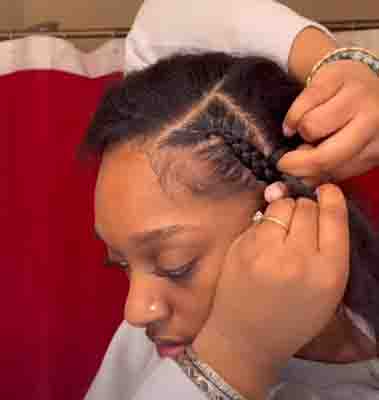
Choosing the right braiding technique for your hair type and considering the longevity of the style are indeed crucial factors when getting braids. Here are some additional tips to help you make your braids last longer:
- Quality Matters: Invest in high-quality braiding hair extensions and products. Quality extensions are less likely to unravel or tangle, ensuring your braids stay intact.
- Proper Installation: Choose a skilled and experienced stylist who can install your braids neatly and evenly. Well-installed braids are less likely to loosen or unravel prematurely.
- Scalp Health: Maintain a healthy scalp by keeping it clean and moisturized. Dry or itchy scalps can lead to discomfort and premature removal of your braids.
- Keep Them Dry: After swimming or exposure to water, make sure your braids are thoroughly dry. Wet braids can lead to mildew and odor.
- Regular Maintenance: Schedule regular appointments with your stylist for maintenance and touch-ups to keep your braids looking fresh.
17 Products to Make Your Braids Last Longer
To make your braids last longer, there are essential products you should consider using:
- Edge Control Gel: Edge control gels help tame and shape your edges, keeping them sleek and frizz-free for a polished look throughout the day.
- Satin Scarf: Wrapping your hair in a satin scarf before bedtime reduces friction, preventing frizz and maintaining your protective style’s shape.
- Silk Pillowcases: Silk pillowcases minimize hair breakage and help your style stay intact while you sleep.
- Satin Bonnet: Similar to a satin scarf, a bonnet offers overnight protection, preserving your hairstyle.
- Satin Headwrap: A satin headwrap provides style and protection, ensuring your protective style’s longevity.
- Satin or Silk Scrunchies: These gentle hair ties secure your style without causing damage or frizz.
- Lightweight Styling Gel: Use a lightweight styling gel or mousse to hold your style in place without stiffness.
- Satin-Lined Wig Caps: For wig wearers, these caps add comfort and protect your natural hair.
- Heat Protectant: Always apply a heat protectant before using hot styling tools to safeguard your hair.
- Wide-Tooth Comb: Use a wide-tooth comb for gentle detangling, reducing the risk of breakage.
- Detangling Brush: A detangling brush makes removing knots and tangles easier and gentler on your hair.
- Moisturizing Leave-In Conditioner: Regularly apply a leave-in conditioner to lock in moisture and prevent dryness.
- Hair Oil or Serum: High-quality hair oils or serums add shine and hydration to your hair.
- Deep Conditioning Mask: Use a deep conditioning mask at least once a week to repair and restore hair health.
- Moisturizing Spray: Keep your hair hydrated between washes with a moisturizing spray.
- Scalp Oil: Nourish your scalp for overall hair health during your protective style.
- Dry Shampoo: A dry shampoo refreshes your scalp, reducing oil buildup and extending your style’s lifespan.
What not to do when styling protectively
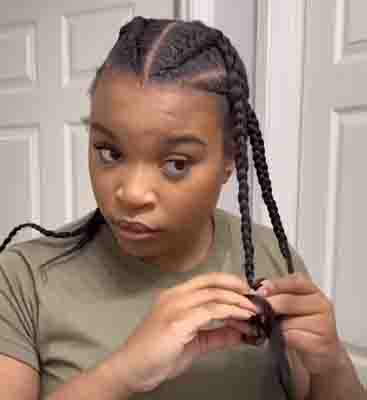
Avoiding excessive tension on your hairline and using the right hair accessories are important factors in making your braids last longer.
- Excessive Heat: Avoid using excessive heat styling tools, as high temperatures can weaken your braids and lead to unraveling or breakage.
- Overloading with Products: While moisturizing is important, don’t overdo it with heavy products, as this can cause buildup and make your braids appear greasy.
- Tight Hairstyles: Avoid wearing your hair in tight hairstyles that can pull on your braids or stress your hairline. Opt for loose and gentle styles.
- Picking or Unraveling: Resist the urge to pick or unravel your braids. This can lead to damage and frizz. If you notice any issues, consult your stylist for proper maintenance.
- Ignoring Your Scalp: Neglecting your scalp health can lead to discomfort and potential damage to your braids. Keep your scalp clean and moisturized.
Removing Your Braids Safely
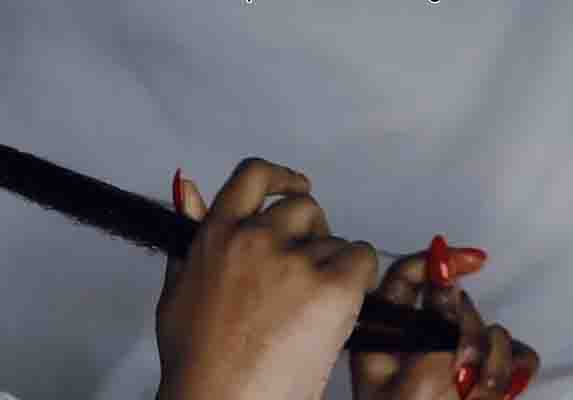
Removing your braids safely is a crucial step in preserving the health of your hair and ensuring that your next style looks great. Here are some additional tips for safely removing your braids:
1. Gather the Right Tools: Before starting, ensure you have the necessary tools, including a wide-tooth comb, scissors (for cutting any knots or tangles), hair conditioner, and hair oil.
2. Divide and Conquer: Divide your braided hair into smaller, manageable sections. This makes it easier to work through the braids and reduces the risk of pulling or damaging your hair.
3. Detangle Gently: Begin by gently detangling each section using your fingers or a wide-tooth comb. Be patient and avoid yanking or tugging on knots.
4. Use Hair Conditioner: Apply a generous amount of hair conditioner to each section of braids. This will help soften the hair and make it easier to unravel.
5. Start from the Ends: Begin unraveling the braids from the ends, working your way up towards the roots. This minimizes tension on the hair and reduces the risk of breakage.
6. Trim as Needed: If you encounter any stubborn knots or tangles that can’t be safely detangled, use scissors to carefully cut them. Be cautious not to cut your natural hair.
7. Wash and Condition: After removing all the braids, wash your hair gently with a sulfate-free shampoo and follow with a deep conditioning treatment. This will help restore moisture and prevent dryness.
8. Give Your Hair a Break: Before braiding your hair again, give it some time to rest and recover. This allows your hair to regain strength and prevents excessive stress from repeated styling.
Why Do Braids Often Unravel Or Become Messy
Braids often unravel or become messy due to several factors:
- Hair Texture: The texture of your hair plays a significant role. Smooth and slippery hair is more likely to slip out of a braid, leading to unraveling.
- Tightness of the Braid: If the braid is too tight, it can put excessive strain on the hair, causing it to unravel or even break. On the other hand, a braid that’s too loose may not hold well.
- Maintenance: Not properly caring for your braided hair can lead to a messy appearance. This includes moisturizing the hair and scalp, protecting it while sleeping, and avoiding excessive manipulation and friction.
- Hair Products: Using heavy or oily products on your hair can weigh down the braids, making them more likely to unravel.
- Activities: Daily activities like exercise, exposure to wind, or wearing helmets can all contribute to braids becoming messy.
FAQ
Normal braids can last from a few days to several weeks, depending on factors like maintenance and hair type.
Use a silk or satin bonnet or pillowcase to reduce friction and preserve your braids while sleeping.
Protect your braids by avoiding excessive pulling, using hair-friendly accessories, and keeping them moisturized.
Secure the ends with small rubber bands, dip them in hot water to seal, and avoid excessive manipulation.
Refresh braids by re-braiding the roots, applying lightweight oil to the scalp, and using a leave-in conditioner for added shine.
Black braids, like other braids, can last from a few days to several weeks with proper care.
Use lightweight oils like jojoba, almond, or argan oil to moisturize and nourish your scalp and braids.
Applying oil to your braids can add shine and prevent them from becoming dry and brittle.
Maintain braids for two weeks by keeping them clean, moisturized, and avoiding excessive friction.
Mousse can help control frizz, add shine, and hold braids in place without the stiffness of some gels.
It’s best to oil your scalp before getting braids to provide moisture and reduce dryness.
Oiling your scalp and braids can promote hair health, but it won’t directly make your hair grow faster.
Spritz your braids with a water and conditioner mixture or use a lightweight leave-in conditioner to rehydrate them.
You can use leave-in conditioner, lightweight oils, or braiding sprays to maintain and refresh your braids.
Yes, leave-in conditioner is suitable for keeping your braids moisturized and looking fresh.
You can shower with braids, but it’s essential to protect them by wearing a shower cap and avoiding excessive moisture.
Rinsing braids every 1-2 weeks with diluted shampoo and water helps maintain scalp hygiene.
You can remove braids after a week, but they can last longer with proper care.
Braids in black hair can last from a few days to several weeks, depending on factors like hair texture and maintenance.
Most types of braids, including box braids, can last for a week or longer with proper care.
The longest recommended duration to leave braids in is 6-8 weeks, depending on hair health.
While some people keep braids for 10 weeks, it’s essential to monitor your hair’s health and avoid excessive tension.
Apply mousse on slightly damp or dry braids to control frizz and style them.
Mousse is often preferred for braids as it provides hold without the stiffness associated with some gels.
A lightweight, alcohol-free mousse is suitable for braids to control frizz and add shine.
A braiding spray with moisturizing ingredients can help keep your braids fresh and hydrated.
Use a non-drying, alcohol-free hair gel to secure braids without causing damage or stiffness.
Mousse can help control frizz and maintain a polished look for your braids.
You don’t need to apply mousse daily; use it as needed to refresh and control frizz.
Sleep with a silk or satin bonnet or use a silk pillowcase to reduce friction and prevent frizz.
Spritz your braids with a water and conditioner mixture, then gently re-braid or twist them to tame frizz.
Yes, leave-in conditioner can help keep your braids hydrated and reduce frizz.

